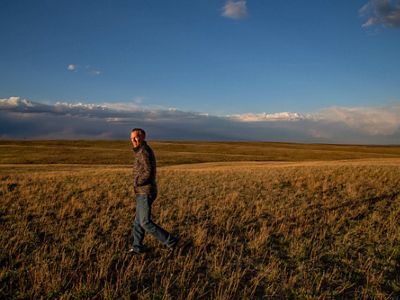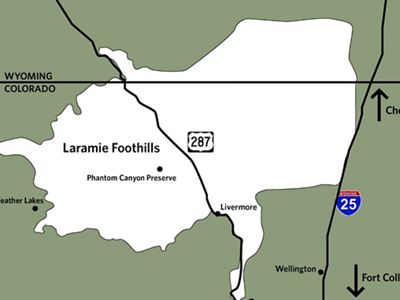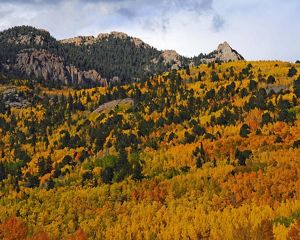
Pronghorn at Phantom Canyon Pronghorn at Phantom Canyon preserve in Northeast CO. © Carly Voight/TNC
It started with a small, yellow flower found almost nowhere else on Earth. Growing along the rocky canyon walls, this rare flower—Larimer aletes—was one of the original reasons for The Nature Conservancy’s efforts to conserve Phantom Canyon 35 years ago. But as science and conservation evolved, this place became a catalyst for a new scale of conservation: looking at the landscape beyond the borders of a single property.


More nature is just a click away
Updates from the conservation world & how you can get involved.
Sign up for Nature News“In the early 1990s, The Nature Conservancy (TNC) in Colorado was starting to look beyond the boundaries of the properties that we owned to understand the impacts of conservation in a larger landscape,” says Nancy Fishbein, director of resilient lands.
Phantom Canyon was the focal point for conservation efforts that grew to include over 140,000 acres of land in the Laramie Foothills. Alongside partners, including local governments, land trusts, landowners and supporters, we collectively connected a landscape stretching from the mountains to the plains.
The Conservation Story
The Laramie Foothills stretch northwest of Fort Collins to the Rocky Mountains and into Wyoming. The foothills were created by the merging of two great landforms, which gave rise to a rich and complex interface where red-rock outcrops and mesas emerge from expansive grasslands. The resulting mosaic of vegetation communities and landforms is a fertile place, rich in human history and host to an incredible diversity of plants, animals and natural communities.
Phantom Canyon first caught TNC’s eye for its rare plants and diverse array of wildlife, as well as its role as a connecting point for wildlife to move from the mountains to the plains. TNC purchased its 1,120 acres in 1987. After the purchase of Phantom Canyon, we began building a vision for community-based conservation, developing projects with private landowners, public land management agencies, non-profits and government agencies, including Larimer County, the City of Fort Collins, and the local land trust.
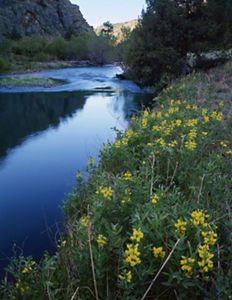
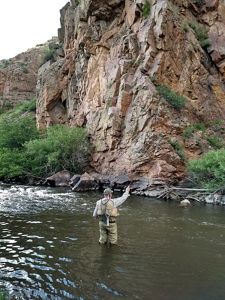
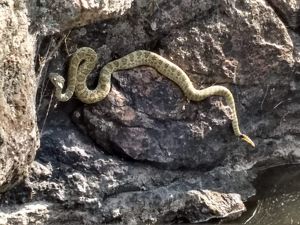
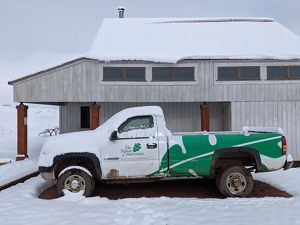
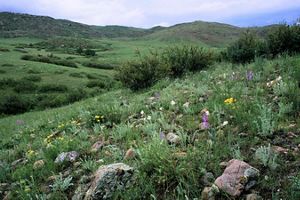
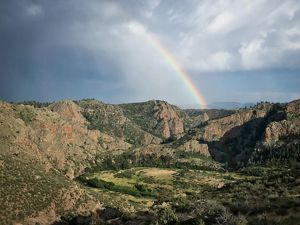
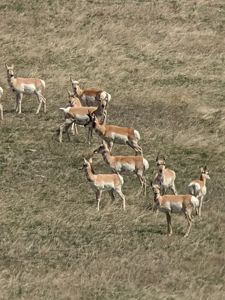
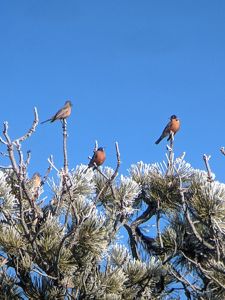
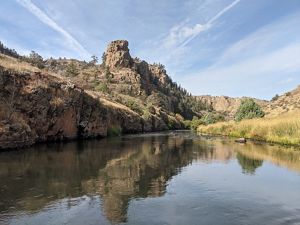
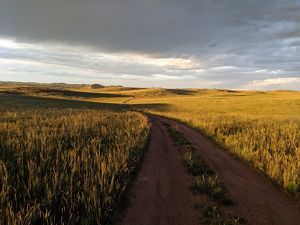

In the Canyon: Wildflowers line the riverbank. © John Fielder/TNC

Recreation: Fly-fishing is one of many opportunities in the canyon. © Kevin Grunewald/TNC

Critters: Rattlesnakes are commonly spotted in the canyon. © Kevin Grunewald/TNC

All-Season: TNC stewards tend to the preserve throughout the year. © Kevin Grunewald/TNC

Summer: Wildflowers are dispersed throughout the canyon. © Wayne Ostile

After the storm: Rainbows are a common sight at Phantom Canyon. © Joe Esparza/TNC

Native Species: The pronghorn is endemic to North America. © Kevin Grunewald/TNC

American Robins: Robins appear in the canyon early after winter. © Kevin Grunewald/TNC

Cache la Poudre: This river flows for four miles through Phantom Canyon. © Kevin Grunewald/TNC

Laramie Foothills: Driving into the canyon. © Kevin Grunewald/TNC
“At that time, there was a massive exurban explosion of people, and we were losing a lot of working rural lands to exurban development,” explains Heather Knight, of Natural Conservation Solutions, LLC, who was TNC’s Phantom Canyon steward for over 20 years.

"[Unmanaged development] fragments the landscape and we lose lands for wildlife, enjoyment, healthy water, food and so on. When everything was under a lot of pressure to grow and change, people collectively saw a common need and an opportunity to work together and achieve something greater than if we were at odds with each other".
This committed group of partners successfully conserved many places in the Laramie Foothills and advocated for policies to fund conservation. In 2004 Great Outdoors Colorado funded the Mountains to Plains Project, an $11.6 million request with a projected local match of $13.7 million—the largest-ever GOCO grant at the time. Over the years, these partnerships and projects protected more than 140,000 acres of land in the area.
“The advisory group would often meet at my house, and we’d have people all together, looking at maps, discussing things that were really challenges,” remembers Knight. “People were willing to sit beside each other and set aside their own individual needs for a while to think about how we make this place better.”
Putting the Pieces Together
1987
TNC purchased 1,120 acres of Phantom Canyon for its rare plants and diverse array of wildlife, as well as its role as a connecting point for wildlife to move from the mountains to the plains. This began a vision for community-based conservation.

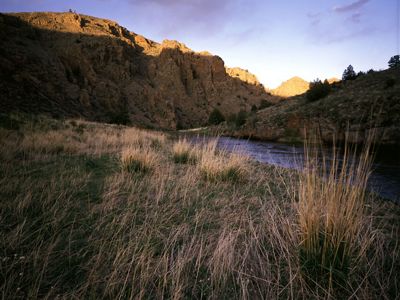
Larimer County voters pass a citizen-initiated “Help Preserve Open Spaces”, a ¼ cent county-wide sales and use tax to fund the County’s Open Lands Program. Four years later, voters extended the tax for 15 more years.
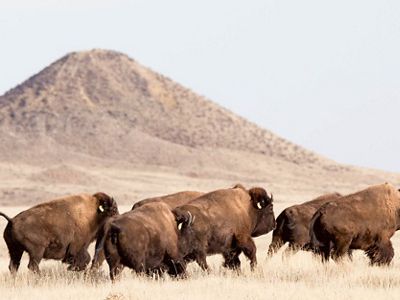
The City of Fort Collins purchased the CO portion of the Soapstone Ranch, now known as the Soapstone Prairie Natural Area. This prairie is home to a herd of bison as well as the endangered black-footed ferret.
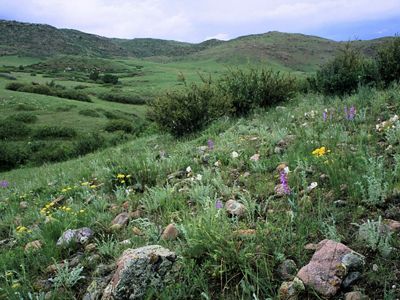
Great Outdoors Colorado funded the Mountains to Plains Project, an $11.6 million request with a projected local match of $13.7 million—the largest-ever GOCO grant at the time.
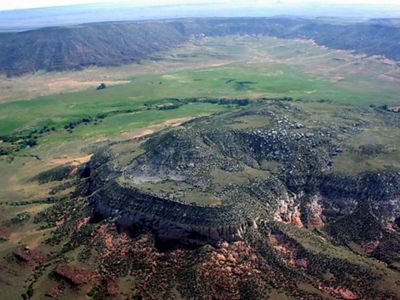
The 15,000 acres of Red Mountain Ranch were a centerpiece of the GOCO-funded Mountains to Plains project. The final piece, the 1,480-acre Gallegos inholding, was purchased in 2007.
These efforts stitched together a vast, conserved landscape that literally connects the mountains to the plains and provides a vital corridor for wildlife movement along the rapidly developing Front Range.
Quote: Heather Knight
At the beginning Phantom Canyon was just one small piece, but it became a springboard for something much larger than itself.
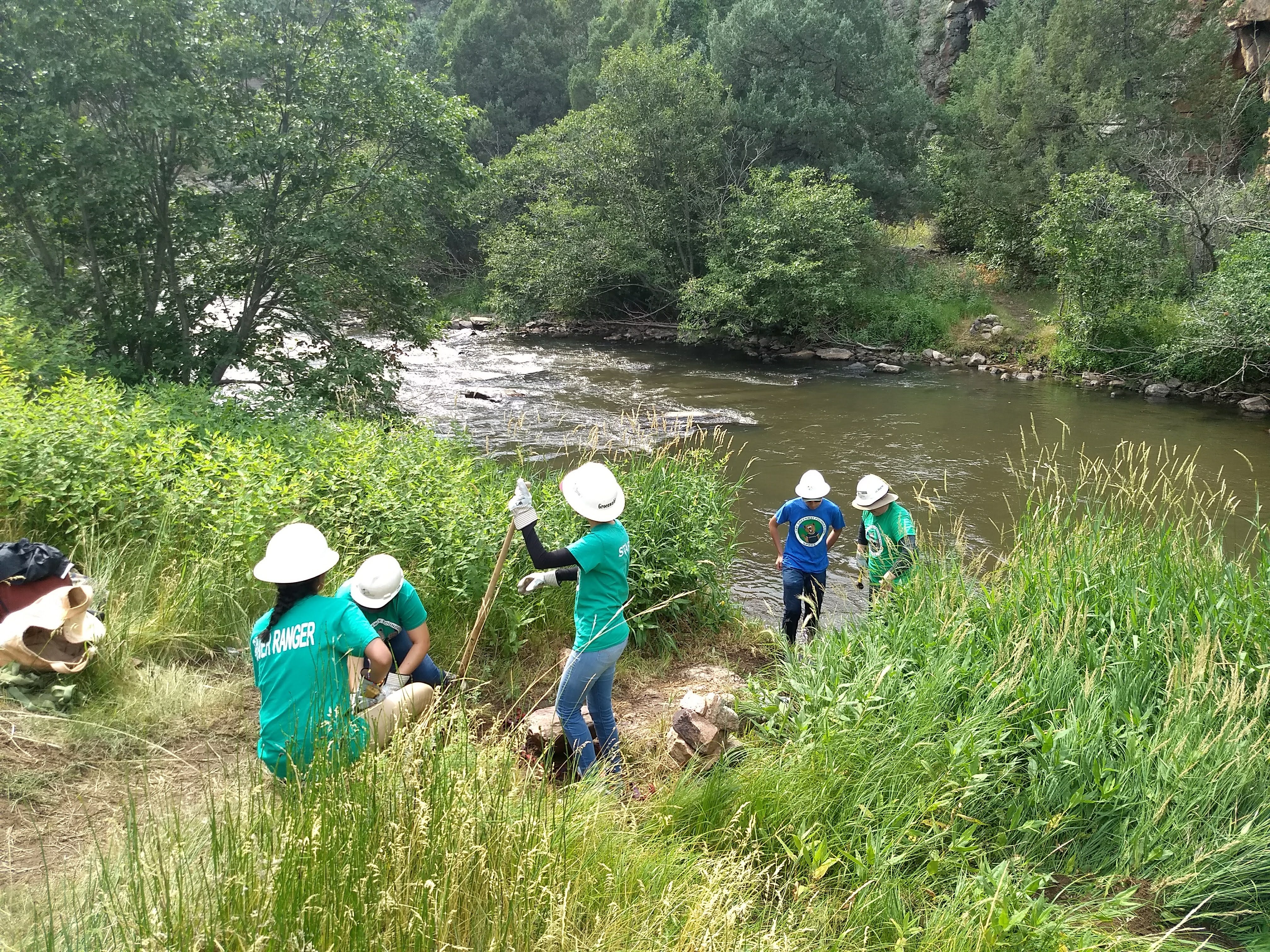
Visiting the Laramie Foothills
You can visit the Laramie Foothills today to see the legacy of this conservation work. Places like the Soapstone Prairie and Red Mountain Ranch are open to the public. Keep an eye out for birds, wildlife, and dramatic skies as you explore these places that have been protected for the future.
The work that TNC and our partners do in this area continues as well. Each year, we host hundreds of visitors at our Phantom Canyon preserve, including fishers, interns, scientists, volunteers, students, birding and plant interest groups, and more. In the summer, students with The Greenway Foundation join TNC and Wildlands Restoration Volunteers for a day of trail work and canyon enjoyment.
As one student said on this year’s trip, "I think my favorite thing about Phantom Canyon is that you never finish getting to know the place. Being here for three years has definitely changed my view, and I had never seen most of the things I got to see this time." - River Rangers participant
Growing Phantom Canyon’s resiliency into the future
We continue to conduct monitoring and research in the area. Our former Phantom Canyon steward, Kevin Grunewald, explains, “Being out here makes us aware and connected with the issues that are happening. We have a close understanding of the ecological health of the area.”
For example, golden eagles are frequently spotted nesting in Phantom Canyon. They tend to return to the same place year after year, as they mate for life and live for an average of 20 years. Several years ago, bald eagles were spotted using a golden eagle nest. TNC set up a wildlife camera where people around the world could watch the bald eagles raise their young. Both types of eagles still nest in and around the canyon today, a good indicator that this place has enough space and prey to support these big predators.
TNC staff and volunteers are working on reintroducing the natural ecological processes of grazing and fire, restoring the prairie through seed collecting, planting and invasive weed management, and creating partnerships within the local community to promote conservation through easements and best management practices.
The lessons learned from this conservation story still impact our work today. Now, TNC’s focus is on conserving resilient, connected landscapes—places that provide core conservation areas with connecting corridors for wildlife adaptation and movement in a changing climate.
Quote: Nancy Fishbein
Connectivity is an essential part of building resiliency, and now that we are feeling the impacts of climate change places like the Laramie Foothills are even more critical.
The Laramie Foothills was one of the first places in Colorado where TNC saw the potential to make a bigger difference by looking beyond the fences of a single property and connecting to the lands around it. As science and conservation changed together over time, research supported the idea that species need large, connected landscapes and room to roam.
“This was part of the evolution of conservation,” says Fishbein.
Think globally, act locally
Sign up to receive monthly conservation updates from Colorado

